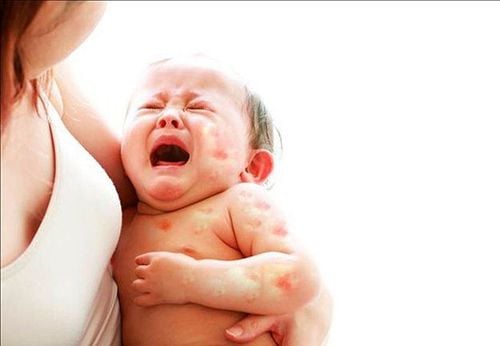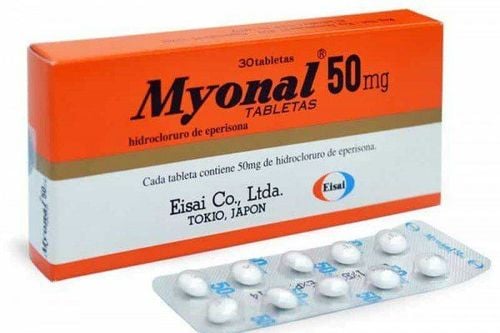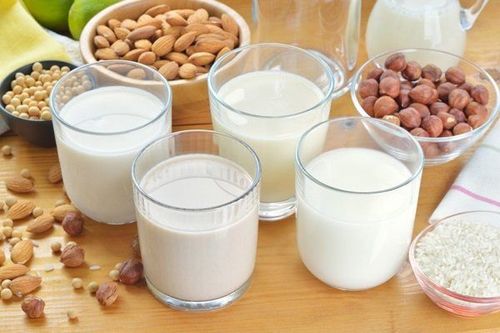This is an automatically translated article.
In severe cases, a cow's milk allergy can be life-threatening. Therefore, parents need to be advised on a suitable diet for children with cow's milk allergy, ensuring adequate nutrition for the child.
1. What is a cow's milk allergy?
Infants diagnosed with cow's milk allergy occur when their immune system overreacts to a specific food protein, milk protein. When children eat or drink milk proteins, they may develop allergic reactions. Symptoms can range from mild (rash, hives, itching, swelling,...) to severe (difficulty breathing, wheezing, loss of consciousness...). In severe cases, a cow's milk allergy can be life-threatening, a reaction known as anaphylaxis.
Because a child's allergy to cow's milk is different in every body and reactions can be unpredictable, if a cow's milk allergy has been identified, parents need to be knowledgeable. about a scientifically correct diet for children with milk allergies, with alternative foods and drinks to meet the growth and development requirements of children at each stage.
2. What is the diet for children with milk allergy?
2.1. Avoid milk and dairy products Milk is one of eight common allergens. Therefore, dairy products as a main ingredient or containing only a small amount must be labeled "contains milk", in order to protect the health of consumers.
Therefore, if the child is allergic to cow's milk, parents need to pay attention to avoid giving the child milk or using dairy products. This also includes milk from other domestic animals. For example, goat's milk protein is structurally similar to cow's milk protein and may cause a reaction in children with a milk allergy.
2.2. Pay attention to read dairy-free food labels Parents should avoid foods that contain any of the following dairy ingredients when preparing food for children with cow's milk allergy:
Butter, butterfat, avocado oil, acids butter or butter ester derivatives; Butter milk; Casein; Casein hydrolyzate; Caseinates in all forms; Cheese; Cream; Junket; Egg tarts; Lactose sugar; Lactulose; All other milks, in all forms including condensed, derivative, dry, concentrated and other animal milks, low fat, malt, milk fat, fat free, powder, protein, skim , solid, pure; Hydrolyzed milk protein; Pudding; Sour cream; Yogurt solids; Whey milk in any form; Whey protein hydrolyzate; Yogurt .

Nếu trẻ bị dị ứng sữa bò thì cha mẹ cần chú ý tránh cho trẻ uống sữa hay dùng các sản phẩm từ sữa
The following products may contain milk protein, parents need to read ingredient labels carefully:
Artificial butter flavor; Pies; Caramel candies; Chocolate; Lactic acid probiotics and other bacterial cultures; Canned meat, sausage, because milk protein casein can be used as a binder. In addition, deli slicers are often used for both meat and cheese products, which poses a risk of cross contact; Margarine; Tuna, as some brands contain casein; Certain specialty products made from milk substitutes (i.e. soy, nut or rice dairy products) manufactured on equipment shared with milk; Many restaurants add butter to their barbecue to add flavor. You can't see the butter after it melts; Some medicines contain milk protein. 2.3. Prepare dairy-free meals The value of cow's milk to the health of young children is that it provides many nutrients necessary for mineralization and bone development. This is especially important during periods of peak growth, such as 1 to 5 years of age and puberty. These nutrients include: protein, calcium, vitamin D, vitamin A, vitamin B12, riboflavin, and phosphorus.
Therefore, when children are allergic to cow's milk and need to follow a diet for children with allergies, they may lose essential nutrients from their diet. At this point, parents will need to choose foods carefully to replace these lost nutrients. Meats, poultry, eggs, fish, nuts and legumes can easily provide the required amount of protein. However, to replace calcium, children need to be provided with many non-dairy sources of calcium or given supplements.
Alternatively, parents can use plant-based milk alternatives as an acceptable substitute if the child is over one year old. These examples include:
Soy milk ; Fortified rice milk; Fortified nut or nut milk (oat milk, flaxseed milk, almond milk, or cashew milk); Fortified coconut milk. In addition, always encourage children to use any milk substitute if tolerated, ensuring they are a good source of calcium and additional nutrients. Calcium-fortified juices will provide extra calcium but are not a good source for other nutrients.

Trẻ dị ứng sữa bò và cần tuân thủ theo chế độ ăn cho trẻ bị dị ứng
2.4. Substitute cow's milk ingredients in recipes Try these simple substitutions to help make your baby's recipes even without cow's milk nutritious and delicious, for example:
Use Use soy or rice water, choose a calcium-fortified brand instead of cow's milk; Process with margarine instead of margarine; Use soy yogurt. 2.5. Baked milk for children Baked milk is an attractive cake with ingredients from whipped milk, flour, eggs, sugar, which is prepared by baking in the oven for a short time and can be eaten. It is the high temperature that will destroy the cow protein structure, reducing the risk of milk allergy for children.
Therefore, if an allergist thinks it is safe for a child to eat baked milk, parents can offer the following:
Store-bought baked milks that have dairy ingredients listed as ingredients. the third or higher part of the weight in the list of ingredients. When making homemade milkshakes, parents don't give more than 1/6 cup of milk per serving of baked goods. For example, a recipe with 1 cup of milk per batch needs to be reduced to 16/cup. Also, be sure to check store-bought products and ingredients to avoid reactions to other allergens. All baked dairy products should be thoroughly baked and not wet or soggy in the middle of the cake.

Cần thực hiện chế độ ăn cho trẻ bị dị ứng sữa một cách khoa học
In summary, cow's milk and other dairy foods are common causes of food allergies in infants and young children. Fortunately, most children clear up their cow's milk allergy between the ages of 3 and 5, while others may develop a lifelong condition. In these cases, parents need to avoid giving their children milk or dairy products to limit dangerous reactions; implement a scientific diet for children with milk allergies, creating conditions for children to develop optimally as peers.
References: chkd.org, heats.health.vic.gov.au, nutricia.co.uk













